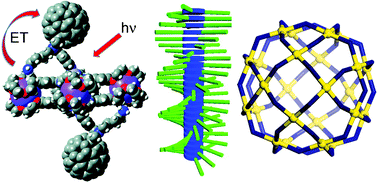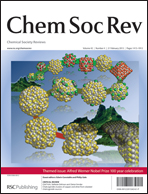Functional behaviour from controlled self-assembly: challenges and prospects†
Abstract
Many naturally occurring systems show us how multi-component supramolecular assemblies can generate useful functional behaviour. In this article the problems and limitations associated with achieving such behaviour in artificial multi-component assemblies is discussed, together with two examples of functions in artificial supramolecular assemblies based on (i) host–guest chemistry in cavities of cages, and (ii) light-harvesting in multi-

- This article is part of the themed collection: Alfred Werner Nobel Prize 100 year celebration

 Please wait while we load your content...
Please wait while we load your content...